Rubbing is one of the main techniques in massage. It is performed with the fingers, as well as with the edge of the palm or the supporting part of the hand. In such types of massage as massage of the head, face, back, tendons, feet, rubbing with the fingers is used. As a rule, massage is performed using the fingertips or the back of the phalanges. It is allowed to rub with one thumb, while resting the rest on the surface being massaged.
To perform a technique correctly, at the required pace and force of impact, you first need to understand the types of techniques and the technique of performing it. Correct execution will allow you to achieve the desired result. It is worth understanding that this technique is very energetic. Therefore, it is necessary to perform massage with extreme caution so as not to damage the skin.
Many experts believe that the main purpose of rubbing is to warm the skin.
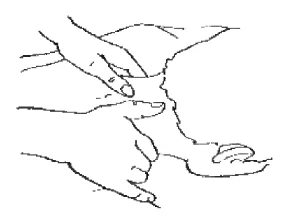
Rubbing with thumbs
If the massage therapist performs rubbing with all fingers, the supporting function in this case is performed by the thumb. For massaging the intercostal spaces, the method of massaging with the middle finger will be very convenient.
For greater convenience, the massage therapist can perform the technique with either one or two hands. The second hand can be used as a weight.
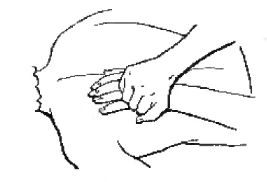
Massage with two hands
Techniques and types of rubbing
Depending on the surface on which the massage is performed (the structure of joints, muscles, tendons), the choice of direction of movement will depend. This appointment is carried out:
- in longitudinal;
- circular;
- zigzag;
- spiral direction.
Rubbing can be done with the edge of the elbow. It is used to massage large joints, knees and hips. This technique is used to massage the back and abdomen.

Rubbing with the elbow
To massage large muscle layers, a more intense technique is used - rubbing with the supporting part of the hand. As a rule, it is used to massage the hips, back, and buttocks. It can be performed with either one or two hands. The following types of reception are distinguished:
- straight;
- circular;
- spiral.
Straight rubbing uses the pads of one or more fingers. The straight-line technique is mainly used to massage the face, hands, and feet.
A circular type of rubbing is performed using the fingertips, with the brush resting on the base of the palm or thumb. This technique can also be performed with one finger, or with the back of bent fingers. This method of rubbing is used to massage the chest, back, and abdomen.
The spiral type of rubbing is performed with the elbow edge of the hand bent into a fist. Used for massage of the back, abdomen, and pelvic areas.
In addition to the main techniques, auxiliary techniques are used:
- sawing;
- shading;
- planing;
- crossing.
Sawing. This technique is performed with one or two hands. It is used to massage the abdomen, back, legs, and thighs. The movement of directions is back and forth with displacement and stretching of the underlying tissues. if sawing is performed with two hands, they should be located 2-3 cm from each other.
It is important that the brushes should not slide, but rather move the underlying tissue.
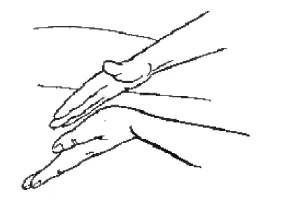
Sawing
Hatching. Hatching is used to improve the elasticity of fabrics. It also has a positive effect in the treatment of post-burn skin scars and pathological seals. With more intense rubbing, the excitability of the nervous system increases; with a softer approach, nervous excitability decreases.
This technique is performed using the pads of the thumb, index and middle fingers, which should be positioned at an angle of 30 degrees relative to the area being massaged.

Hatching
Planing. This technique is used to treat eczema and psoriasis. It is also used for restorative purposes in the treatment of skin with scarred lesions. This technique is used to increase muscle tone.
I would like to note the positive effect on the subcutaneous fat layer, which decreases under the influence of this technique. I can perform movements with one or two hands. The brushes should move sequentially one after another. Bent fingers apply pressure and then displace tissue.
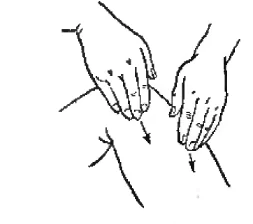
Planing
Crossing. This technique is performed with one or two hands. It is used to massage the back, abdomen, and cervical spine. The hand should be positioned so that the thumb is as far to the side as possible.
When performing the technique, your hands should be 2-3 cm apart. Hand movements should be directed away from you and towards you alternately, displacing the tissue being massaged.
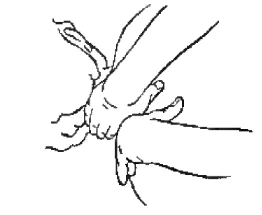
Crossing
A two-handed technique with weights is also performed. It is performed in order to perform a more enhanced effect on the skin. When rubbing perpendicularly, three fingers (index, middle and ring) apply pressure to the radial edge of the thumb of the other hand.
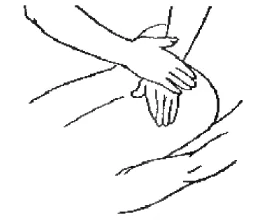
Rubbing with weights
In addition to the basic rubbing techniques, an additional one is also used - the beak-shaped technique.
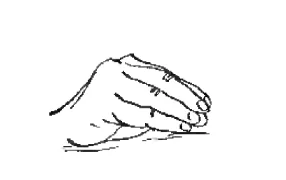
Beak maneuver
Execution Features
This technique is performed as a preparatory stage before the next one - before kneading. At first, the technique is performed at a slow pace, gradually increasing the intensity. To enhance the effect, a weighted technique is used.
All movements must be carried out along the lymphatic and blood vessels.
Main mistakes when performing the technique:
- painful execution;
- sliding movements on the skin, and not with it;
- rubbing with straight rather than bent fingers.
Now you have an idea of what types of rubbing techniques there are, how to perform them correctly, and what features of implementation there are. During execution, it is necessary to take into account all the subtleties and nuances. The patient should not feel pain. Rubbing can be combined with stroking.



